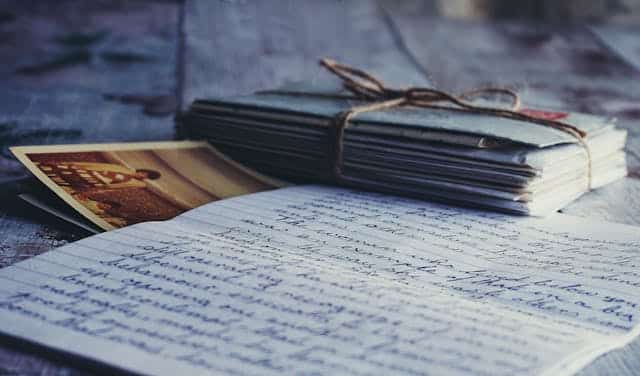How to Create a Family History Book That Lasts
September 23, 2024
Don’t you love stumbling upon an old family photo, and, suddenly, you’re transported back in time? Maybe it’s a picture of your late grandparents, or a snapshot of a family reunion decades ago.
Having those memories is priceless, but ensuring they are accessible to future generations? That’s where the real challenge begins.
Creating a family history book is more than just a project; it’s a labor of love. You spend hours, maybe even years, collecting stories, digging up old photos, and piecing together documents.
But what happens after you are gone? How do you make sure all that hard work isn’t lost to time? Let’s dive into some simple yet powerful strategies to future-proof your family history book and keep those stories alive for generations to come.
Start with durable materials.
First things first. Let’s talk about the physical book itself. Sure, there are other ways to preserve your family history, but a book is the most straightforward.

You want to do all you can to ensure that the family history book will last as long as possible, and this means creating it with durable materials.
Opt for archival-quality, acid-free, and lignin-free paper.
It might sound a bit technical, but this type of paper won’t yellow or deteriorate over time.
Pair that with a sturdy binding—think leather or a hardcover that can withstand the test of time.
Embrace the digital age.
Technology is constantly evolving, and while that can be overwhelming, it also opens up incredible opportunities for preserving your family history. Creating a digital copy of your family history book is like a safety net, but don’t rely solely on saving everything digitally.
“As handy as digital files are, they may prove to be less preserved than traditional analog sources,” notes Flori Meeks, a seasoned copywriter with nearly a decade’s experience in writing family histories. “Digital preservation faces many challenges, like the ever-changing landscape of technology—think about how hard it is to find a device that reads DVDs or floppy disks these days.”

Instead, keep a digital backup of your family history book as a high-resolution PDF and make sure it is stored in multiple places—on your computer, in the cloud, and on a USB drive.
Heck, throw in a backup drive for good measure.
But don’t stop there! Why not create an e-book version?
You could even include QR codes in the physical book that link to an online family tree.
As Thomas MacEntee advises in his book, After You’re Gone: Future Proofing Your Genealogy Research, make sure all your technology stays up to date. “CD-ROM discs degrade over time. Negatives and movie film can fade and fall apart. Transfer items to digital ASAP.” He’s spot-on: Keeping up with technology ensures that your family’s history doesn’t get lost in the shuffle of tech advancements.
Preserve original sources.
While digital versions are incredibly convenient, there’s something special about holding an original document in your hands. Whether it’s an old letter, a birth certificate, or a cherished photograph, preserving these originals is just as important as digitizing them.
Use archival methods. Acid-free boxes and sleeves are your friends here. Keep these items in a safe, climate-controlled environment. If you’re running out of space or can’t maintain the proper conditions, consider donating these items to a historical society or archive.
As Meeks points out, this not only ensures their preservation but also makes them accessible to others who might benefit from them in the future.
Plan for longevity.
It’s crucial to create more than one copy of your family history book and to share it with your family. That way, there’s a better chance of it surviving over time. But don’t just stop there. Consider donating a copy to a local archive, historical society, or library.

“You have a responsibility to safeguard your research and to make sure it is passed on properly. If you do not act now, someone else will act on your behalf,” notes MacEntee, also stressing the importance of not assuming that an institution will automatically accept your donation.
Reach out, make the necessary arrangements, and ensure your family’s history has a safe, long-term home.
If you have made these arrangements, make sure your family is aware. As MacEntee emphasizes, “You do not want the organization to call your family two or three weeks after your death and say, ‘Where is our stuff?’”
Keep it fresh with regular updates.
A family history book isn’t a once-off project. It’s a living document that should evolve as your family grows. Make room for updates—new photos, stories, or documents that come to light.
Some people like to leave blank pages at the back of the book for future additions, while others prefer to create new editions or addendums. The key is to keep the stories fresh and relevant for the next generation.
Get the family involved.
Speaking of the next generation, getting your family involved can make all the difference. Give them the family history book as a gift, encouraging them to add to it and making them feel like they’re part of something bigger.
“The more family members you can involve, the more stories, memories, and details you’ll be able to include,” Meeks suggests. “They’ll be doing something to help the next generations of their family and to preserve their own stories.”
Family gatherings or reunions are the perfect opportunity to get everyone to share their memories, and to share your findings with them.

Consider setting up a digital archive where everyone can upload content like stories, photos, and documents.
Make it a collective effort—this isn’t just your project, it’s a family legacy.
The more involved your family is, the richer your family history book will be.
In the end, future-proofing your family history book is about more than just preserving information. It’s about ensuring that the stories, struggles, and triumphs of your ancestors are never forgotten.
By taking these steps, you can rest easy knowing that your family’s history will be a cherished resource for generations to come.































